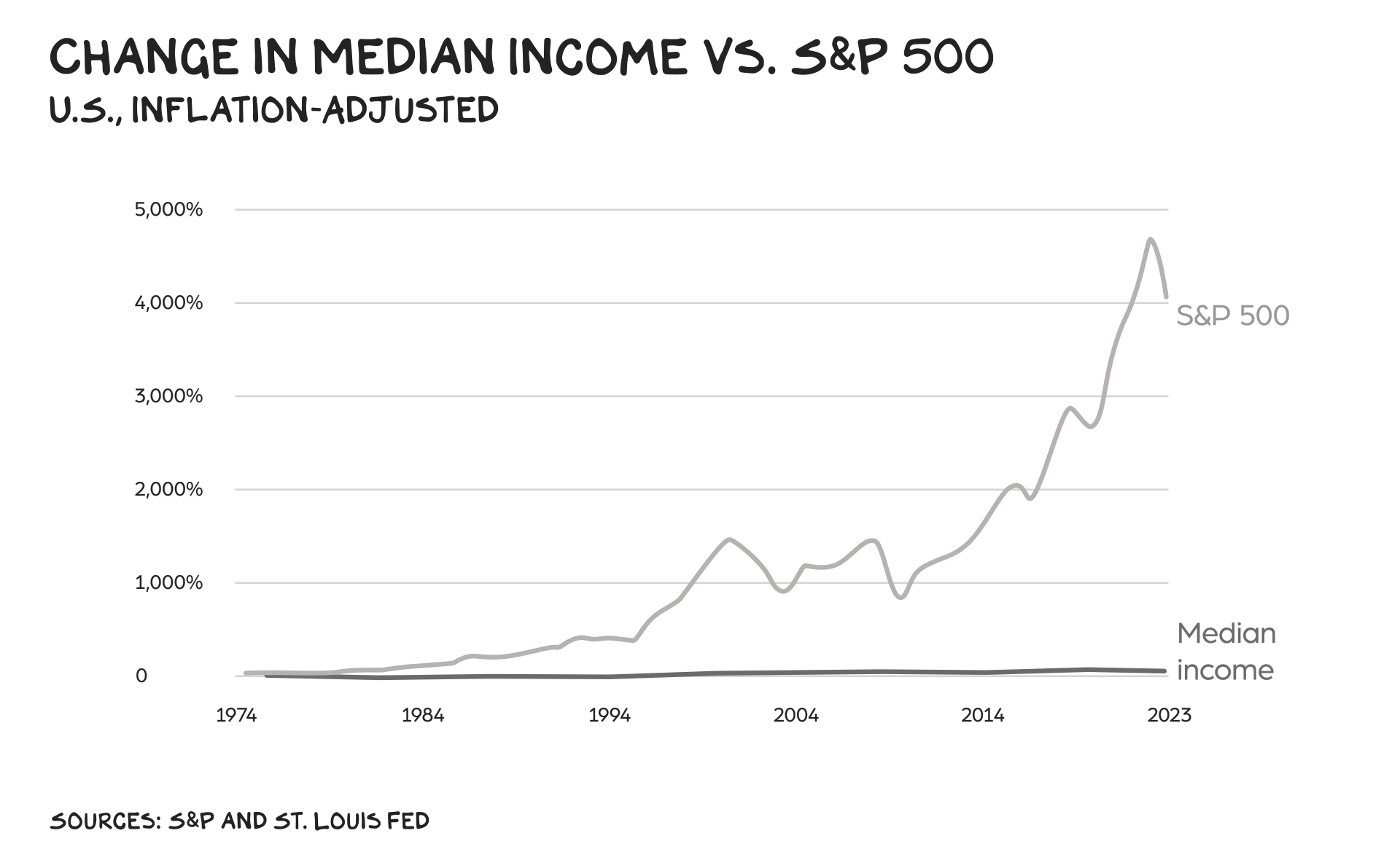War on the Young
-
Audio Recording by George Hahn
This week I spoke at TED2024, the iconic program’s 40th anniversary event. I joined RuPaul, Kesha, and two different astrophysicists on the stage in Vancouver. I was given 15 minutes, and took 17, to riffle through 47 slides articulating what I believe is the greatest challenge facing the U.S. It’s not inequality, climate change, or war in the Middle East, but an issue that threads these threats together: America’s war on the young. A war of mutually assured destruction.
A decent proxy for the success of a society is how it treats children. Not how individuals parent, but the success of the structures, incentives, and leadership charged with preventing a tragedy of the commons. In sum, can we answer a simple question: Do we love our children? In 2024 America, the rejoinder is disheartening.
Breach of Contract
We’ve broken the social contract that binds America: Work hard, play by the rules, and you’ll be better off than your parents were. For the first time in our nation’s history, this is no longer true. Today’s 25-year-olds make less than their parents and grandparents did at the same age, yet they carry student debt loads unimaginable to earlier generations. Neither the minimum nor median wage has kept pace with inflation or productivity gains, while housing costs have outpaced them. The statistics on children’s and young adults’ well-being are staggering.
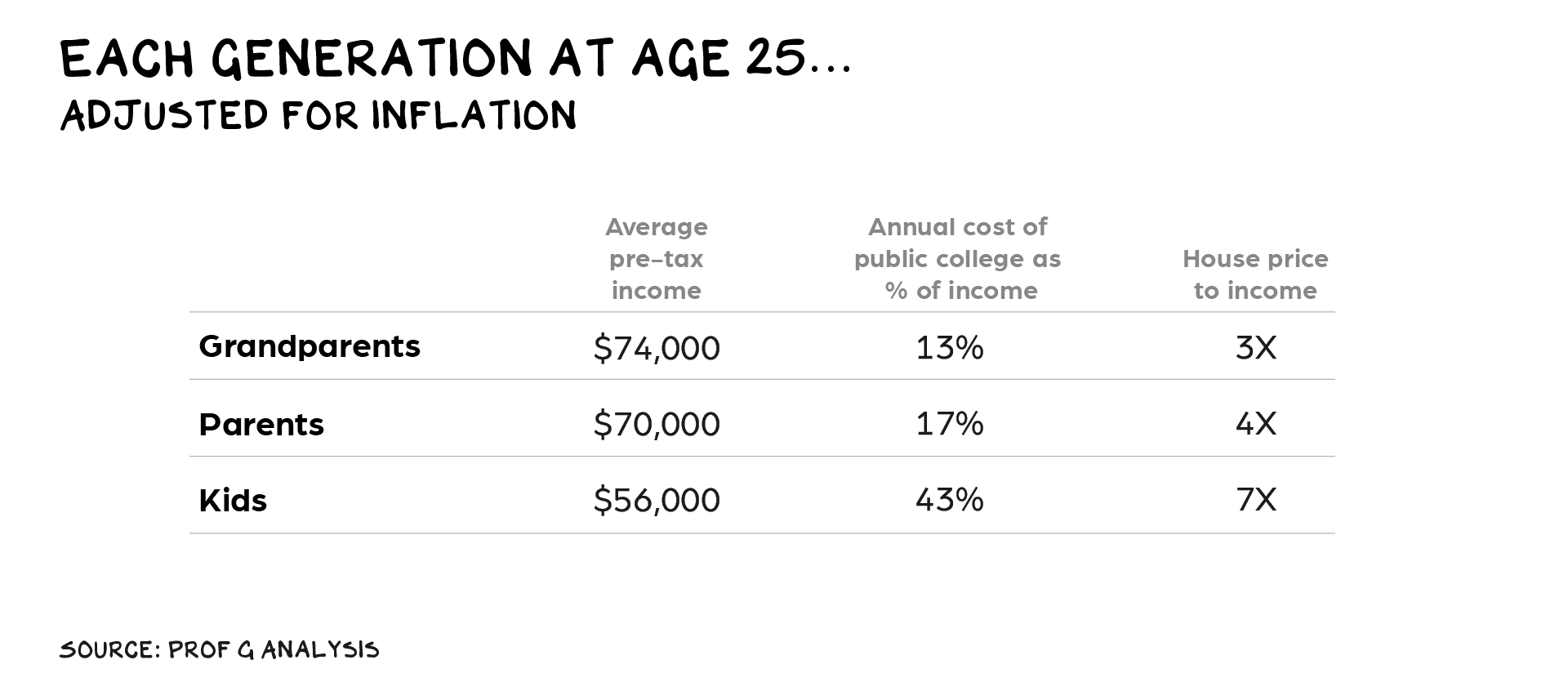
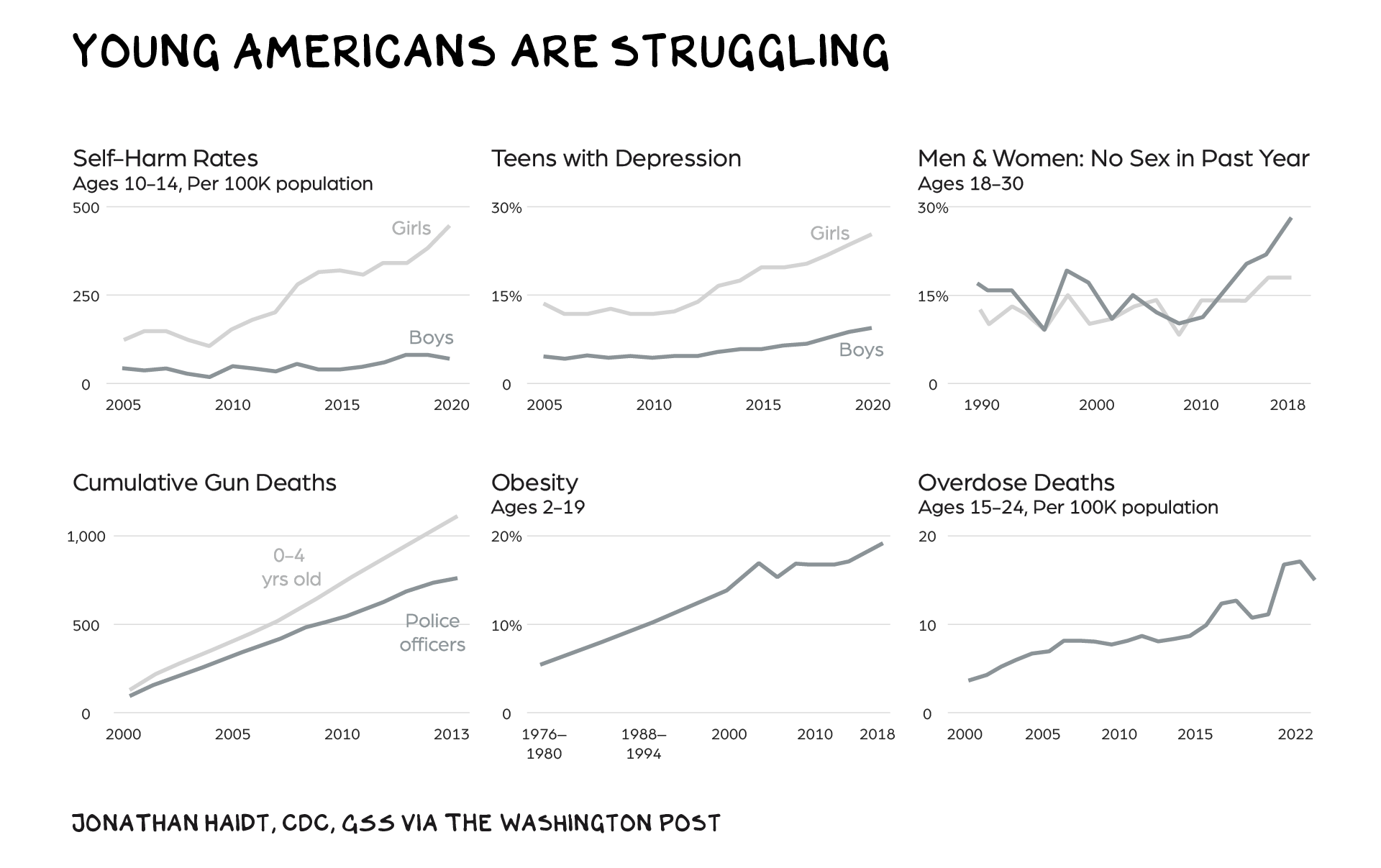
None of this is lost on young people, and the shattering of the social contract has left them feeling rage and shame. Half of Americans older than 55 say they are “extremely proud” to be American; that number drops to 18% among 18- to 34-year-olds. This weakens the immunity system of America, allowing minor cuts to U.S. society to bring on deadly opportunistic infections. Just as when someone in your life blows up at you, it is about the issue at hand … and it isn’t. American youth’s warranted concern on social justice issues, despite remarkable progress on all these issues, turns seamlessly into rage.
Hoarders
We don’t lack the resources to level up young people and present the opportunities afforded my generation. But the cohorts who benefited most from the extraordinary post-war economic boom of the 20th century have pulled the ladder up behind them. In 1989 adults under 40 held 12% of household wealth, while those over 70 held 19%. Today those under 40 command just 7% of household wealth, while those over 70 control 30%.
Higher education is the most effective means of closing the generation gap. But the incumbents have artificially constrained access, sequestering opportunity largely to wealthy households, peppered with a few freakishly remarkable kids from the lower 90% to smear vaseline over the caste(ing) of higher ed. Elite schools tout their financial aid, emphasizing that students with median household incomes pay little or no tuition, but it’s a headfake. Being more generous with a select few low-income students only wallpapers over exclusivity, when the goal should be to eliminate it. We have simply reshuffled the elites.
Harvard’s undergraduate class size has been static at 1,600 for half a century, while its endowment has grown nearly 500%. When your top-line revenue is up sixfold but you purposefully do not increase production, you are no longer a public servant but a Chanel bag. Single-digit admissions rates are the ultimate vanity metric, something deans and donors brag about at cocktail parties, when they should be a mark of shame. As I’ve proposed before, we should offer higher ed a grand bargain: Redirect the money earmarked for bailing out the one-third of America that has attended college to increasing freshman seats and reducing costs. The Biden administration’s proposed student loan bailouts shrink the tumor, but don’t address the underlying cancer — declining affordability and accessibility.
Capital vs. Sweat
We have elevated capital over sweat (i.e., labor). The public is numb to this mythology, benefitting the incumbents who’ve created it. Back in 2008, when the market crashed, young(ish) people like me, coming into our prime income-earning years, were able to buy growth stocks at low valuations. The foundation of my economic security was buying Amazon at $7 ($179 today) and Apple at $7 ($167 today) and Netflix at $12 ($611 today). Ever since, however, we’ve inflated asset prices by pumping them full of steroids and stimulus using low corporate tax rates and bailouts that are financed on the backs of young people. “Keep me rich, on your credit card,” said every American over the age of 50 to citizens younger than them. In sum: Real median income from labor is up 40% since 1974, while the S&P 500 is up 4,000%.
We’ve protected the wealth created by ownership at the expense of income earned by labor through the tax code, which favors gains from investments. Gains from stock sales are taxed at lower capital gains rates. Real estate holdings can appreciate tax free, and once sold, the gains can be rolled into another investment. Again, a series of transfers of wealth from earners (youth) to owners (seniors).
Representative?
And what taxes are collected are increasingly redistributed to the generation who needs them least. In 1985 the federal government spent three times more per capita on seniors than it did on kids. By 2019 that ratio had risen to eight times. We’ve cut senior poverty from 17% in the 1970s to 9% today, which is admirable. But child poverty has risen over that same period, from 16% to 19%.
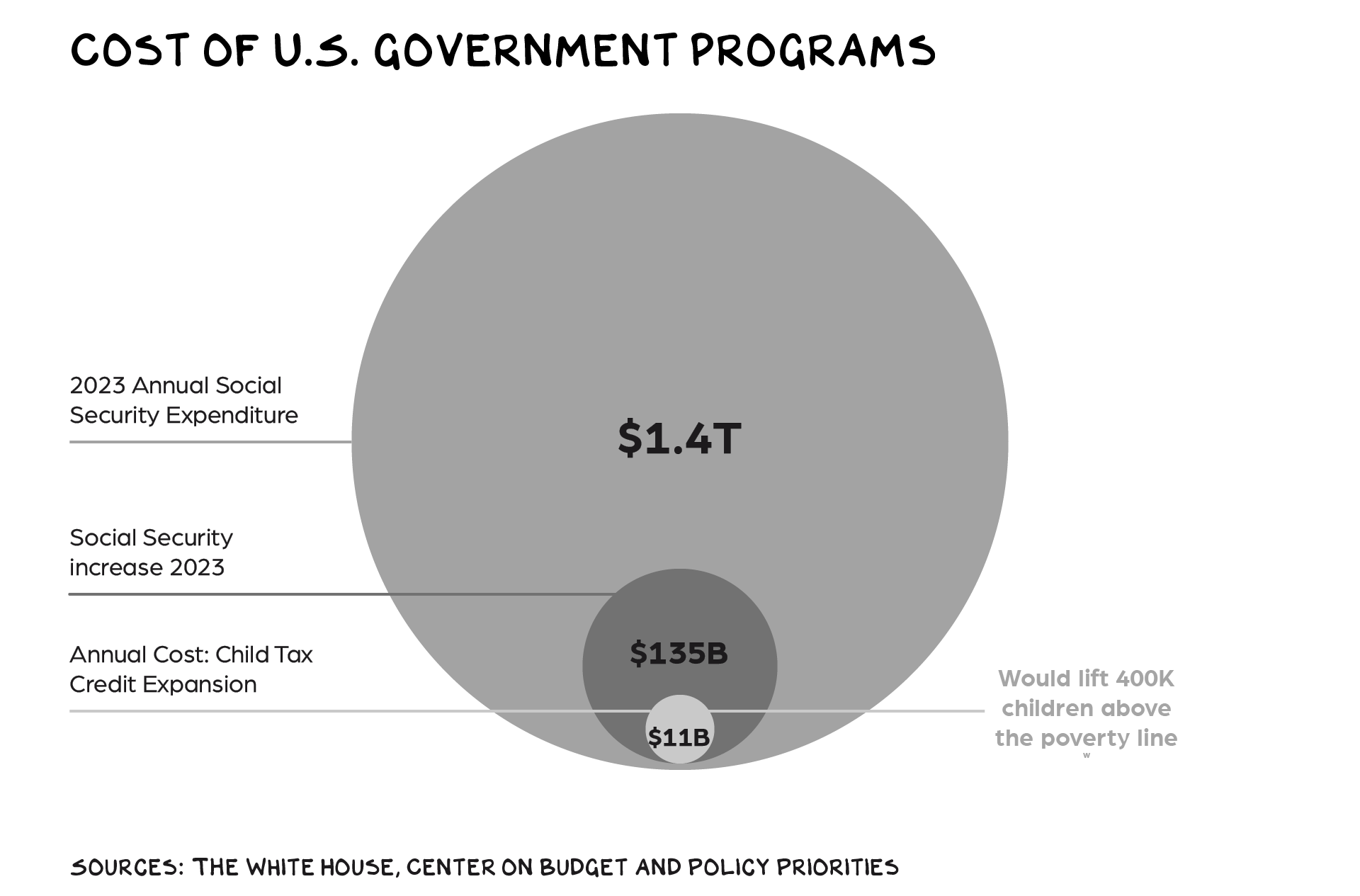
The “demo” in democratic is failing us, as seniors vote seniors into office who then vote themselves more money. With neither age limits nor term limits, and incumbent reelection rates over 90%, congressional seats have become lifetime appointments. Nancy Pelosi may be the sharpest 83-year-old in Congress, but her time has passed: She has a daughter who was born during the Johnson administration, when less than one-third of homes had a color TV. Does our leadership really relate to the challenges facing a 15-year-old girl being sent messages on extreme dieting by Meta, or the budding addiction crisis of young men on phone-based gambling apps? We need churn to recalibrate and transfer wealth, but it’s been dampened with retardants that cost trillions. D.C. has become a cross between The Walking Dead and The Golden Girls — its denizens see the living (young) as nutrition, vs. the future.
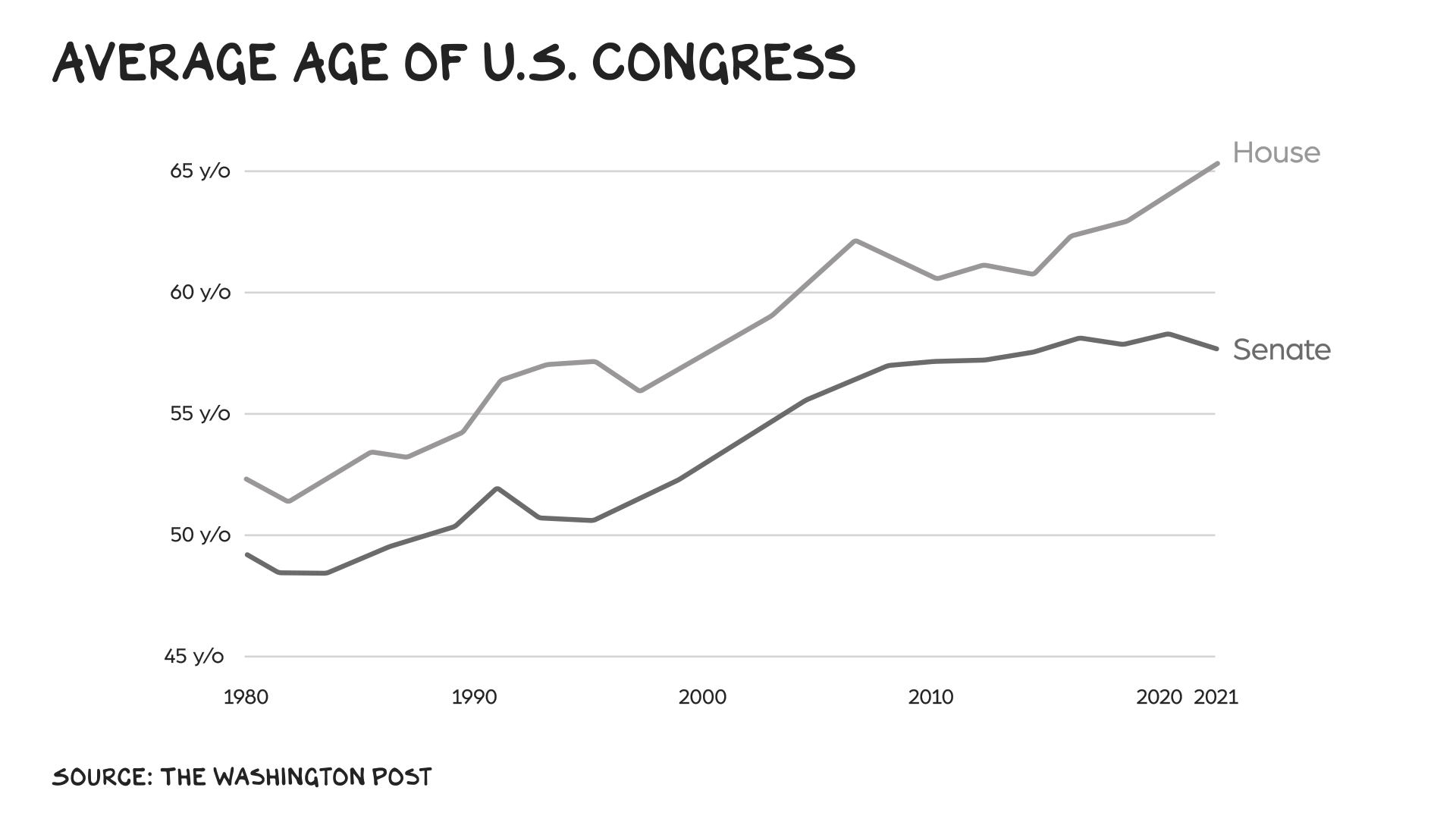
Minotaurs
To appease King Minos of Crete, ancient Athens sacrificed seven young men and seven young women to the Minotaur he kept under his palace. Then Theseus slew the Minotaur. Today in America, we’re offering an entire generation to the Minotaurs of Big Tech, and our Theseus, Congress, can only stand by and make speeches. Teen depression and self-harm, bullying, loneliness, and obesity have shot up since social media began haunting them 24/7. Since 2017, Congress has held 40 hearings on children and social media and passed nothing to address the problem. Democrats and Republicans have introduced legislation, including to age-gate social and to reform Section 230 (which immunizes internet platforms from most litigation), but nothing gets done. At the last dramatic reading of what ails us, Senator Dick Durbin admitted to failure: “The tech industry alone is not to blame for the situation we’re in. Those of us in Congress need to look in the mirror.” We need to make tech platforms liable for the harms they cause; we should eliminate Section 230’s liability shield for algorithmically elevated content — freedom of speech isn’t free.
Buck Stops
The U.S. is the 10th-happiest country in the world for people over 60, and the 62nd-happiest for people under 30. Young people are economically disadvantaged, threatened by climate change, and voiceless thanks to our dysfunctional politics. And they’ve been manipulated from childhood by a toxic cocktail of paleolithic instincts, medieval institutions, and godlike technology. We have broken the social contract, and younger generations aren’t going to fulfill their end of it. In 1993, 60% of 30- to 34-year-olds had at least one child. Today that number is 27%. Young people aren’t meeting or mating, and the consequences will be dire. Young people’s labor powers the economy, and their taxes pay for the services consumed by old people. Without robust youth employment, Social Security will go bankrupt, debt service will consume the federal budget, and the commonwealth will collapse. We’ve created a future so unappealing, youth is opting out.
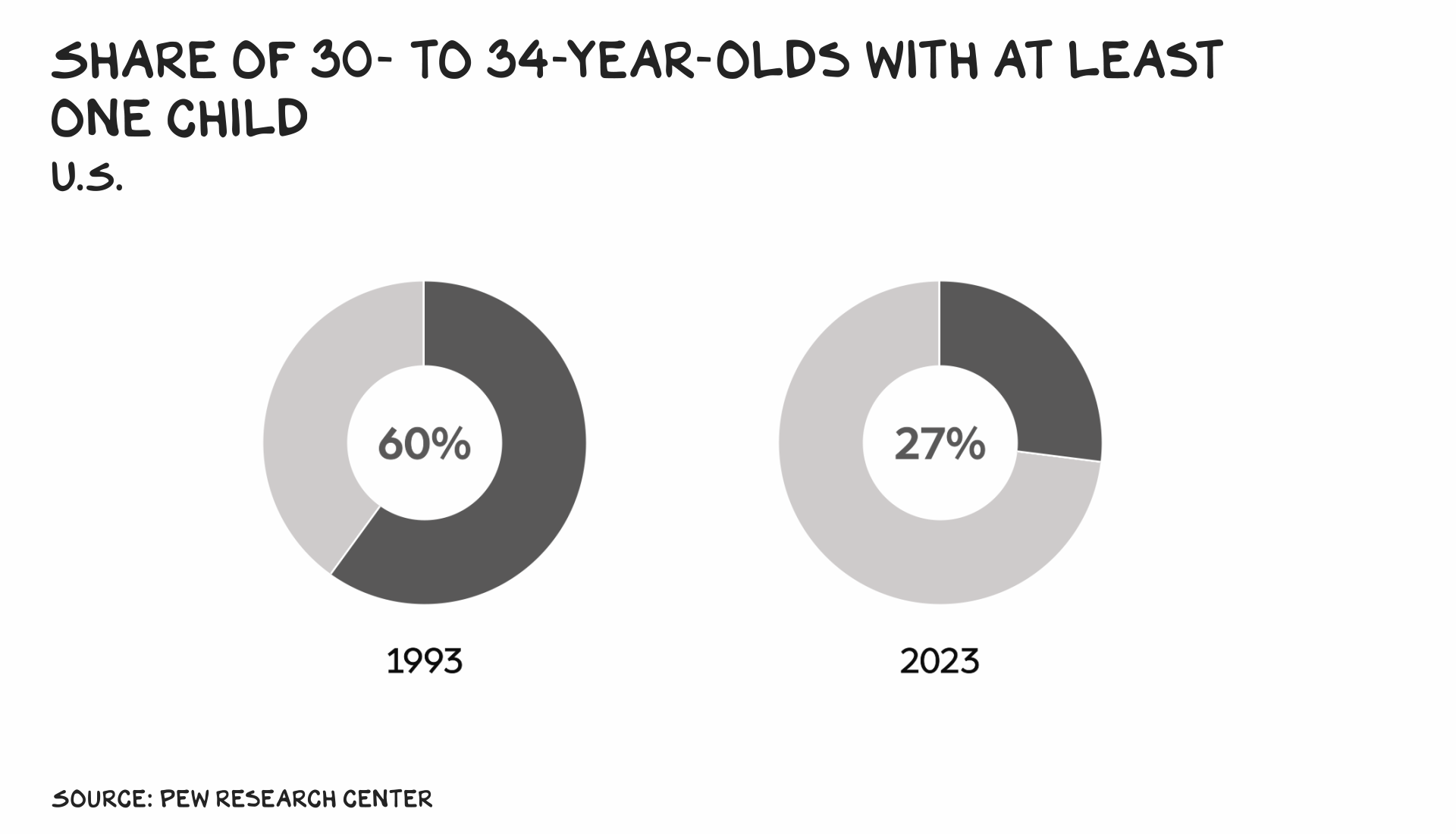
Fixable
The incumbents will throw their arms up like an 8-year-old who refuses to take responsibility. The plea of complexity is an illusion — every problem we have levied on young people can be addressed. We have the hard part figured out: how to grow the economy at a sustained rate to pay for programs that might turn things around. Here are just a few programs and fixes we could try.
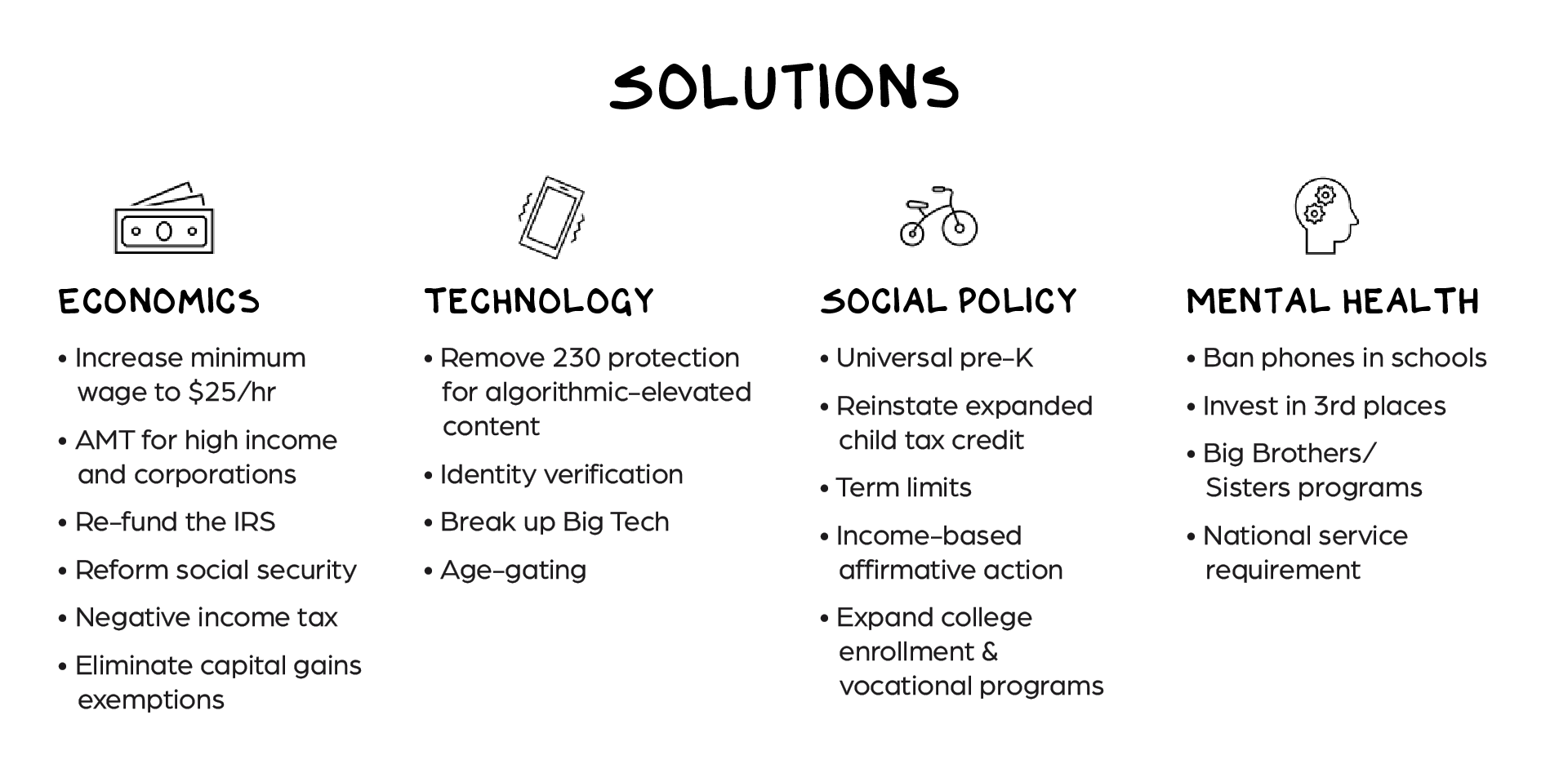
I had my first child at 42, and it changed my life. I became more responsible, focused, concerned about the future, and empathetic. In sum, I became a better American. Children make us better. We care for our kids, but do we love children? Somewhere along the way, we lost the script as a society. If we have the resources to address these issues — and we do: Nvidia added a quarter of a trillion to the economy in 5 minutes post-earnings — but continue to look the other way, then we have to ask: Is America worth investing in? And do we really love our children?
Life is so rich,
![]()
P.S. On our latest Prof G Markets episode we discuss ByteDance and events betting. Listen here and tune in every Monday.
P.P.S. I’m giving a lecture and sitting for a Q&A on the State of Young People with Section on May 14. Sign up — it’s free.



